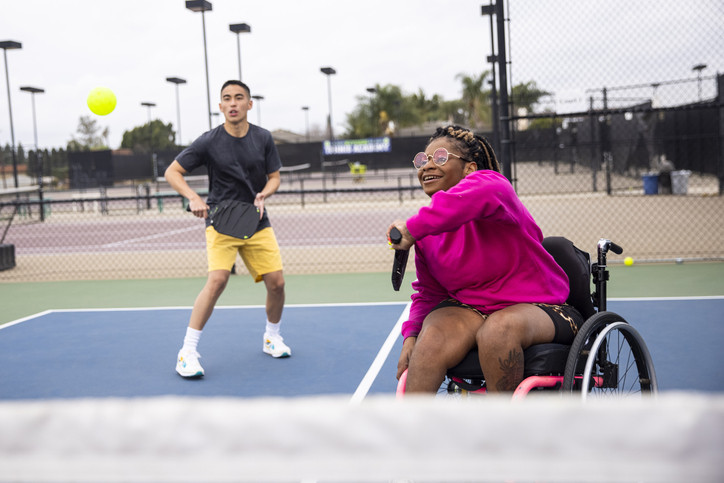
Tips to leverage neuroplasticity to maintain cognitive fitness as you age

Can white noise really help you sleep better?

Celiac disease: Exploring four myths

What is prostatitis and how is it treated?

What is Cushing syndrome?

Exercises to relieve joint pain

Think your child has ADHD? What your pediatrician can do

Foam roller: Could you benefit from this massage tool?

Stepping up activity if winter slowed you down

Common causes of cloudy urine
Exercise & Fitness Archive
Articles
Do activity trackers make us exercise more?
Activity trackers appear to motivate people to walk 40 more minutes per day, resulting in about two pounds of weight loss per person over time, according to an analysis published in the August 2022 issue of Lancet Digital Health.
Taking up adaptive sports
Our abilities may change during the course of a lifetime. Adaptive sports are competitive or recreational activities that are modified to support people living with disabilities or limitations.
Hybrid exercise training
Hybrid exercise training combines heart-pumping aerobic action with muscle-strengthening moves in the same exercise session. The strategy has the advantage of meeting two key goals of the federal Physical Activity Guidelines in one fell swoop. And it also appears to be one of the best—and most time-efficient—ways for people who are overweight to lower their risk of cardiovascular-related risk factors. Strong muscles boost a person's basal metabolic rate—the amount of energy the body needs to keep working during rest. That improves weight-loss efforts by ramping up the number of calories burned.
Three moves for functional fitness
Older adults can benefit from functional fitness exercises—those that focus on the muscles needed for basic everyday actions, like squatting, bending, reaching, and twisting. An all-around exercise routine that addresses the major muscle groups is ideal for improving functional fitness. Still, people should add specific exercises that mimic basic movements, such as getting up and down from the ground or a seated position, bending down and lifting objects, and carrying heavy or bulky items.
Waist trainers: What happens when you uncinch?
Splashy advertisements suggest that compression devices called waist trainers can help you sculpt inches off your waistline. The claims far outweigh the evidence, but exercises that strengthen core muscles can also help shape your waist.
Grab your paddle
Paddle sports, like canoeing, kayaking, and paddleboarding, tone muscles in the back, shoulders, arms, and core to help make everyday movement easier and safer. Plus, water activities get people to interact with nature, which can boost their mental and emotional health. Begin by signing up for individual or group paddling lessons where all equipment is provided. The experience teaches you the basics, like how to paddle and safely get in and out of the boat, and other rules and etiquette.
Stronger body, healthier heart?
Doing 30 to 60 minutes per week of strength training exercises is linked to a lower risk of premature death in general, and from heart disease in particular. Regular strength training may improve heart health by lowering the risk of blood pressure and metabolic syndrome. Body-weight exercises such as standing lunges and bench push-ups are a convenient way to build muscle because they can be done anywhere, without the need for special exercise equipment.

Tips to leverage neuroplasticity to maintain cognitive fitness as you age

Can white noise really help you sleep better?

Celiac disease: Exploring four myths

What is prostatitis and how is it treated?

What is Cushing syndrome?

Exercises to relieve joint pain

Think your child has ADHD? What your pediatrician can do

Foam roller: Could you benefit from this massage tool?

Stepping up activity if winter slowed you down

Common causes of cloudy urine
Free Healthbeat Signup
Get the latest in health news delivered to your inbox!
Sign Up











